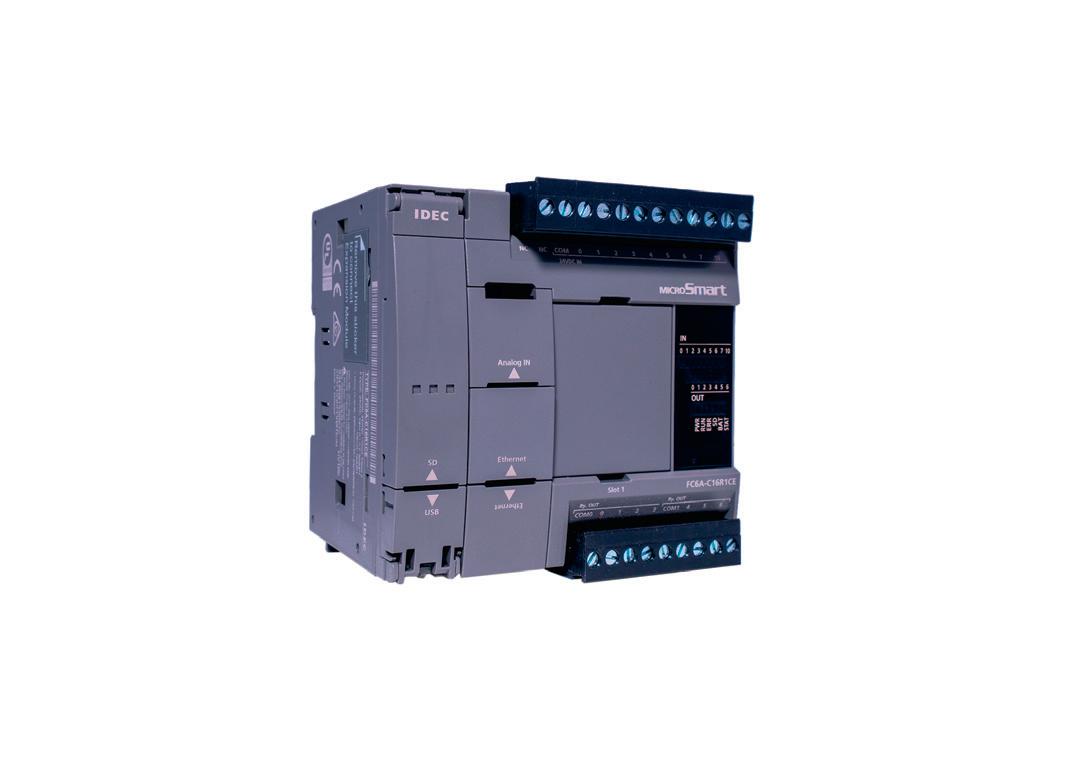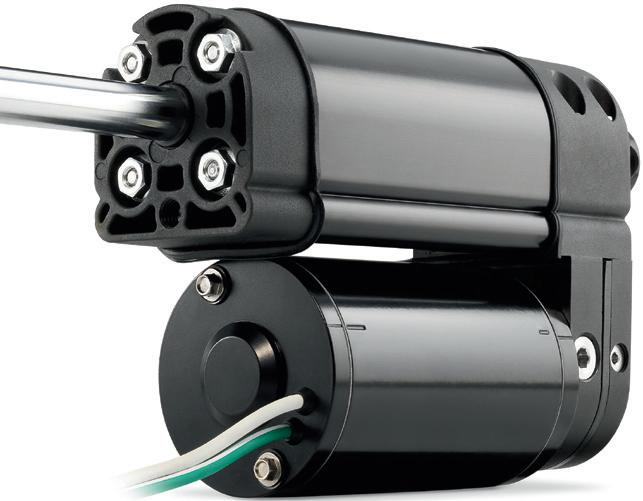
10 minute read
Zero Trust security for industrial control systems
©stock.adobe.com/au/EtiAmmos
One of the key drivers of the Fourth Industrial Revolution (Industry 4.0) has been the convergence of the physical and cyberphysical worlds. Whilst this has facilitated significant technological progress, the proliferation of IT-OT convergence and digital transformation in industrial control systems (ICS) has also exposed global critical infrastructure assets to security vulnerabilities that could have disastrous consequences for plant operators. A key philosophy that has gained in popularity, in tandem with this convergence, has been the Zero Trust security architecture framework which was first published in 2010 and has since gained a lot of momentum within the global cybersecurity community in all industry verticals. It is now commonly perceived as the answer to the growing number and sophistication of cybersecurity threats. However, is Zero Trust the Holy Grail of all security frameworks and should it be applied to ICS infrastructure assets?
You might be wondering: what is Zero Trust? In simple terms, Zero Trust is not a solution, it’s an extensive security framework that requires all system users, including computing devices, to be continuously authenticated and authorised prior to granting or keeping access to system applications and data. Zero Trust operates under the notion of ‘least privilege’, which translates to providing minimal system access to the extent of users and operators being able to perform the required system functions. Zero Trust architecture is underpinned by a combination of advanced security technologies such as multi-factor authentication (MFA), identity and access management (IAM), network segmentation and nextgeneration end-point security protection such as network firewalls and intrusion-prevention systems — all of which are now available for ICS assets in most industry verticals.
Now the question is, should Zero Trust be applied to ICS infrastructure? The short answer is yes. Zero Trust is considered the gold standard when it comes to protecting ICS infrastructure against internal and external security threats; however, there are a number of challenges that need to be considered when trying to adapt a Zero Trust security architecture within an ICS infrastructure.
The first challenge is what we refer to as ‘technical debt’, which pertains to the retrofit rework required on systems to support required functionality; in the case of Zero Trust and ICS, such functionality could be IAM and MFA, network segmentation, monitoring, etc. Another challenge is with legacy ICS assets and their inability to provide least-privilege access control, which is a key component in a Zero Trust security environment. For these reasons, successful Zero Trust security implementations are often delivered in greenfield installations as the hardware and software better support this security framework. Furthermore, it’s much easier to architect the ICS system and sub-systems with the appropriate network segmentation before the ICS goes into production.
The good news for brownfield installations is that most of these advanced security concepts can be bolted onto existing ICS infrastructure assets with minimal effort or investment, all of which are designed to significantly increase the security posture of the ICS if properly architected, implemented and continuously monitored and managed.
There’s no question that Zero Trust is a significant paradigm shift from traditional cybersecurity; as such, it will take time for organisations to migrate to the new security philosophies and best practices. Traditional cybersecurity concepts focus on verification and trust, whereas Zero Trust cybersecurity concepts focus on least-privilege underpinned by authentication and authorisation.
As the saying goes, there’s no need to boil the ocean. This statement is especially true when it comes to cybersecurity, where it doesn’t have to be an all-or-nothing approach. At Siemens, we strongly promote the Defence in Depth (DiD) security framework to our customers to protect their ICS environment from internal and external cybersecurity threats. What’s interesting with the DiD framework is that it shares a lot of similar concepts and philosophies as the Zero Trust security framework, especially in the realms of IAM, network segmentation, application whitelisting in addition to advanced monitoring and actionable intelligence. DiD is a cybersecurity strategy that provides multiple, redundant defensive controls in a thoughtfully layered approach in the event where one security control fails or a vulnerability is exploited, the system continues to operate with integrity.
As the number and sophistication of cyber threats and exposures continue to evolve and increase in frequency, it’s simply not feasible to eliminate all security threat vectors from an ICS infrastructure. The objective should be to implement a strong cyber-resilience strategy based on industry standards and best practices whilst raising your ICS security status to a level that is considered ‘too expensive to attack’.
*Serge Maillet is the Industrial Cyber Security - Country Segment Manager for Siemens Digital Industries in Australia and New Zealand. Serge has an engineering background in industrial (OT) networks and holds a Master of Science degree in cybersecurity. He helps organisations in all industry verticals with increasing their IT-OT cybersecurity posture and compliance for critical infrastructure assets.
HANDHELD HMI
IDEC Corporation has introduced a handheld human-machine interface. The HG1P is lightweight and robust and with a 4.3″ LCD screen designed to enhance operator interactions for automated machine tending and robotics applications. At only 500 g and with contoured hand grips, a hand strap and a wall hanging bracket, the HG1P’s ergonomic design is intended to make it comfortable to use for long periods. The hardy design is tested to withstand 1.5 m drops, and it uses a flush mount selector switch to prevent breakage. The TFT colour LCD touch panel displays at 480x272 pixels and is bordered with 12 physical momentary function keys (F1 to F12) with click-feedback, which write to internal memory bits within the HMI. In addition, a hardwired emergency stop button, selector switch and a 3-position enabling switch make this handheld HMI flexible for designers and convenient for users. The HG1P is configured with WindO/I-NV4 software as for other IDEC HMIs, and a common mini-USB cable or USB-A memory stick can be used to download configurations and save data.
Connectivity to automation platforms is via a standard 19-pin connector, using optional cables from IDEC up to 7 m long or user-created cables up to 15 m long. The cable transmits power, hardwired signals and digital communications. Available in both serial and Ethernet models, the HG1P supports major industrial communication protocols such as Modbus TCP/IP, Modbus RTU, FTP client, FTP server, webserver and user communication.
IDEC Australia Pty Ltd
www.idec.com/australia



MODULAR ELECTROHYDROSTATIC ACTUATION SYSTEM

The Moog Modular Electrohydrostatic Actuation System (Modular EAS) features standardised modules with a wide number of customisation options available. This process allows for extensive application potential by meeting the specific application requirements. The system’s smallest scope of delivery consists of a basic manifold and an electrohydrostatic pump unit (EPU), which Moog delivers as an assembled and tested unit.
To expand the system, the basic module can be combined with various options or adapted with additional standardised high-speed manifolds in order to build a complete motion control system. The localised power allows for energy efficiency due to the elimination of the flow control valving and centralised piping, which should reduce the amount of wasted energy commonly found on traditional hydraulic systems.
Benefits include high force capability and force density; low environment impact due to up to 90% lower oil requirement; and low noise emission.
The system is suitable for a wide range of industrial machinery and can be used on metal-pressing applications from forging, powder and sheet metal presses to hot forming, punching and isostatic press machines. In wood and paper milling, testing and power generation applications, the system allows for decentralisation of the machine axes. Additional applications can be found in the marine sector, on operational mobile machinery, and on injection and blow moulding machinery in the plastics sector.
Moog Australia Pty Ltd
www.moog.com

E-LEARNING WITH THE EXPERTS
You want to improve your knowledge in EX? No problem, we have your solution. In our online seminars we share our EXpertise for hazardous areas to various topics. Learn comfortably from anywhere and anytime. The best? You also could get a certifi cate. Enrole now here stahl.my-e-campus.com/en or email sales.aurs@r-stahl.com
CONTROLLER I/O MODULES
IDEC Corporation has expanded its MicroSmart FC6A Allin-One PLC family with three 12 VDC CPUs, giving end users, designers and OEMs more options for automating battery-backed equipment.
Many applications require 12 VDC power. Smaller smart relays may support too few I/O points and lack enough programmability, while more full-featured PLCs are too expensive and don’t provide the necessary I/O voltages. The 16 I/O FC6A All-in-One CPUs with 12 VDC enable these PLCs to handle over 100 I/O points in an economical and expandable form factor.
Still included are all of the standard FC6A All-in-One features, including Ethernet, USB and serial connectivity; SD memory slot; replaceable battery; HMI module; up to three I/O expansion modules with removable terminal blocks; and easy expansion of communication ports.
The rugged form factor can with withstand -25 to 65°C operating temperatures and Class I Div 2 environments. Users can configure and monitor the PLC using the WindEdit app for iOS and Android over Bluetooth and Ethernet. The popular Modbus TCP and RTU industrial protocols are built in, as are data logging and web server functions.
The updated modules available for the FC6A All-in-One 12 VDC CPUs are the FC6A-C16R1DE 16-point 12 VDC relay output module; the FC6AC16K1DE 16-point 12 VDC transistor sink output module; and the FC6A-C16P1DE 16-point 12 VDC transistor source output module.
IDEC Australia Pty Ltd
www.idec.com/australia


EDGE AI INFERENCE PLATFORM
The Neousys Nuvo-7162GC edge AI inference platform supports NVIDIA Quadro P2200 and Intel 9th/8th-Gen Core processors.
With the NVIDIA Quadro P2200, the Nuvo-7162GC can deliver up to 3.8 TFLOPS of GPU computing power for real-time AI inference tasks. To ensure optimum system performance and reliability in harsh industrial environments, the system employs Neousys’s Cassette and dissipation design. It allows the system to operate at up to 54°C ambient without GPU throttling, while the system can operate up to 60°C ambient without performance degradation.
Equipped with rugged construction and wide-temperature operation capability, it is designed to be deployed into confined places and power sophisticated machine vision, automation and video analytics solutions in volatile conditions.
Backplane Systems Technology Pty Ltd
www.backplane.com.au

ELECTRO-HYDRAULIC LINEAR ACTUATORS
Thomson Warner H-Track electro-hydraulic linear actuators can move loads of up to 2177 kg from a compact mounting envelope. The actuators are suitable for space-constrained applications requiring high load handling and shock resistance.
Hydraulic cylinder-based systems require a complex assembly of hoses, pumps, valves and reservoirs. This infrastructure can be costly to install, operate and maintain, and the fluid itself requires careful handling. Thomson Linear H-Track actuators resolve this issue with a miniaturised hydraulic pump that is powered by a DC motor. The pump, cylinder and reservoir are a single unit that fits into a small housing about the size of a screw-type actuator. This hybrid actuator has a force rating of 21.35 kN and can achieve travel speeds of nearly 100 mm per second. Users can select between motors and pumps to optimise for higher load capacity or higher speed than can typically be attained with ball screw-based designs.
Using hydraulic power to create linear motion also has a cushioning effect that enables the system to absorb shock loads that might otherwise bend the ball screw or the extension tube, especially if the shock load occurred while the actuator was extended.
The ability to configure multiple pump and cylinder sizes enables Thomson to create H-Track iterations with various levels of speed and load capacity. Its pumping and reservoir architecture minimises components and optimises the volume/pressure differential. A split-tank shuttle valve with back pressure relief adds further efficiencies.
Treotham Automation Pty Ltd
www.treotham.com.au






